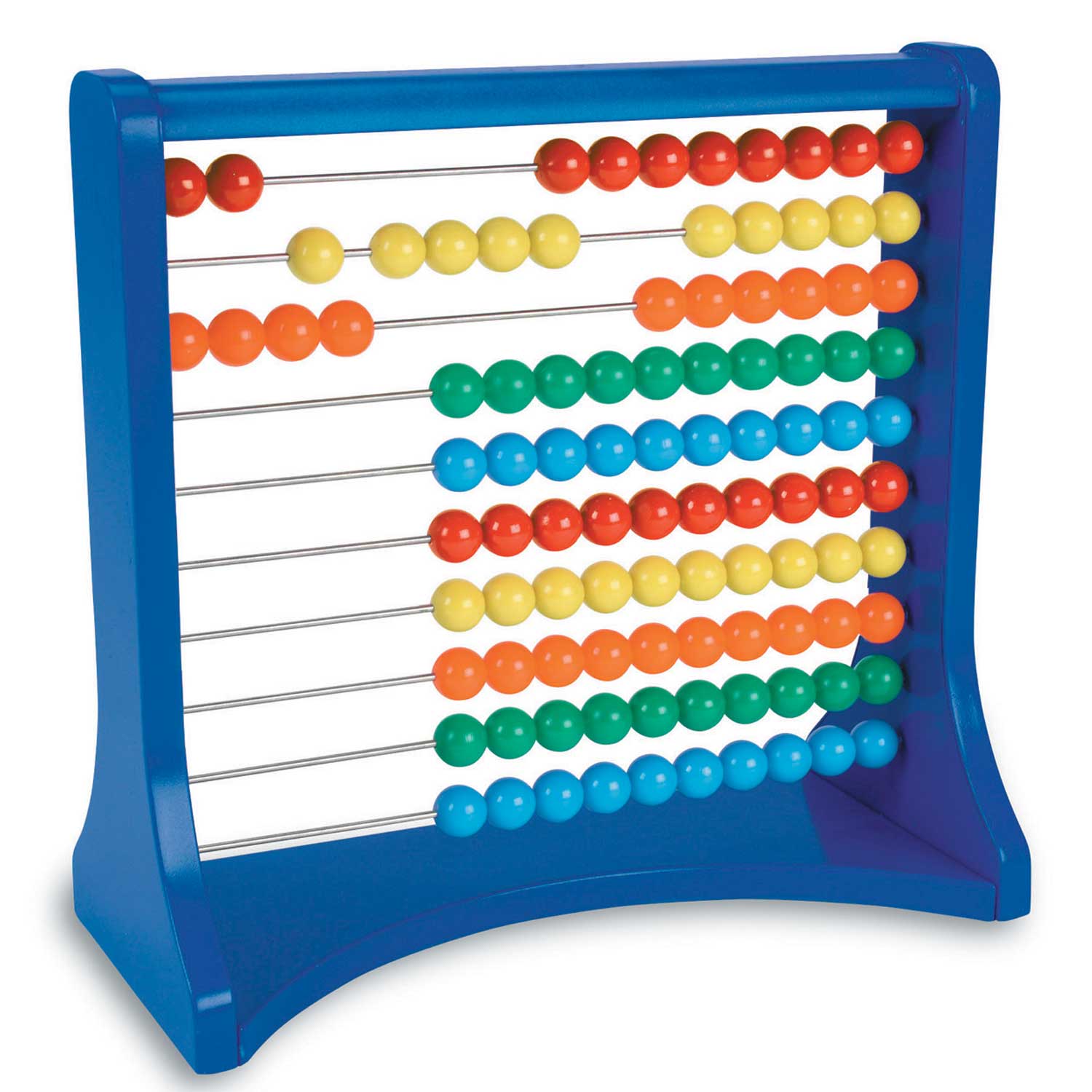

This means that we have options from which we can choose the one that is most convenient for us. With a lower fifth bead, we have two different ways to represent the numbers 5, 10 and 15. With two upper beads we can achieve the same by using the suspended bead technique (懸珠, Xuán zhū in Chinese, kenshu in Japanese), a kind of simulated or virtual upper third bead for the rare occasions when this third bead is required (see figure from 15 to 20). With three upper beads we can store up to 20 on a single rod, which is convenient for traditional division and multiplication techniques. Traditional 5+2 Chinese abacus illustrating the suspended bead use However, traditional abacuses had additional beads, the most frequent being the 5+2 type (although the 5+1 type were also popular in Japan) and occasionally the 5+3 type. This is all that is needed to be able to perform decimal arithmetic with the abacus. it has four beads on the lower deck and one on the upper deck. Modern and traditional abacus Modern 4+1 abacus 5+3 and 5+1 abaci
#Abacus row how to
This textbook is intended as an introduction to the traditional method, and is aimed at people who already know how to use a modern abacus using the modern method. The way in which it was used, the “Traditional Method”, remained stable for at least four centuries until the end of the 19th century, when an evolution began towards what we will call the “Modern Method”, that makes use of a “Modern Abacus”. From China its use spread to other neighboring countries, especially Japan, Korea and Vietnam, remaining as the main calculation instrument until modern times. The eastern abacus (simplified Chinese: 算盘 traditional Chinese: 算盤 pinyin: suànpán, Japanese: そろばん soroban, simply the abacus in this textbook), as an abacus of fixed beads sliding on rods, originated in China at an uncertain date, but by the late 16th century its use had entirely displaced counting rods as a computing tool in its home country. 18.4 Journal articles and book chapters.16.5 Appendix: Cubes of two digits numbers.16.4 From elementary arithmetic to numerical analysis.13.1 How many multiplication methods are there?.10.2 Multi-digit divisors (long division).10.1 One-digit divisors (short division).10 Division/Traditional division examples.8.6 The combined multiplication-division table.8.1 Memorization of the division table.7.7 Traditional Division Arrangement (TDA).7.3 Why do the division rules include remainders?.7 Division/Guide to traditional division (帰除法).6.7 The hidden beauty of traditional division.6.6 Indexing the multiplication table (division table).6 Division/Modern and traditional division close relatives.5.2.2 Guide to traditional division (帰除法).5.2.1 Modern and traditional division close relatives.

4 Addition and subtraction/Extending the 123456789 exercise.3.9 Table 2: The 123456789 exercise over a background.



 0 kommentar(er)
0 kommentar(er)
